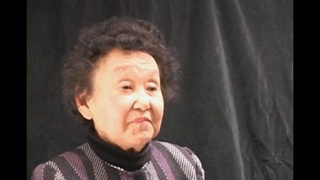Interviews
Recalling Pinedale and Tule Lake concentration camps
I was at each camp—Pinedale and Tule Lake—approximately three months. I’m only eighteen years old. And at that age, you don’t take things too seriously. It occurred to me that if I were a German or an Italian alien, I would be running around free. Yet, as an American, I am confined behind barbed wire. This obviously did not make sense. But other than that, I did things an eighteen year old might do—play baseball and try to make the best of things. I did want to get out of camp, and I did eventually make it [out] in the fall of 1942.
Date: August 27, 1998
Location: Pennsylvania, US
Interviewer: Darcie Iki, Mitchell Maki
Contributed by: Watase Media Arts Center, Japanese American National Museum
Explore More Videos

Under suspicion after Pearl Harbor
(b. 1924) Political scientist, educator, and administrator from Hawai`i

Family's deportation from Peru to U.S. after the bombing of Pearl Harbor
(1930-2018) Nisei born in Peru. Taken to the United States during WWII.

Conditions aboard U.S. transport ship while being deported from Peru
(1930-2018) Nisei born in Peru. Taken to the United States during WWII.

Receiving a negative reaction from father upon asking about World War II experience
(b. 1939) Japanese American painter, printmaker & professor

Memories of dusty conditions at Minidoka incarceration camp
(b. 1923) Nisei from Washington. Resisted draft during WWII.

Ransacking of family home by FBI following the bombing of Pearl Harbor
(b. 1927) Japanese American Nisei. Family voluntarily returned to Japan during WWII.

Witnessing father's arrest through a child's eyes
(b. 1927) Japanese American Nisei. Family voluntarily returned to Japan during WWII.

Participating in military drills in school in Japan during the war
(b. 1927) Japanese American Nisei. Family voluntarily returned to Japan during WWII.

Hearing anti-American war propaganda from a teacher
(b. 1927) Japanese American Nisei. Family voluntarily returned to Japan during WWII.

The hardships of life in Japan during World War II
(b. 1927) Japanese American Nisei. Family voluntarily returned to Japan during WWII.

Neighbor took care of hotel business during the World War II
(1918-2023) Nisei Japanese kabuki dancer

Anti-Japanese sentiment at the time of World War II
(b. 1918) Issei businessman in Canada


Family life in a Japanese Canadian internment camp in Slocan
(b. 1920) Incarcerated during World War II. Active member of the Japanese Canadian community

Lack of political power led to camps
(1924-2018) Researcher, Activist
